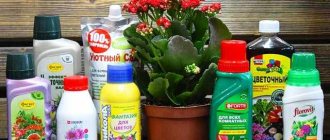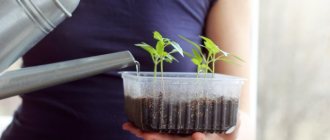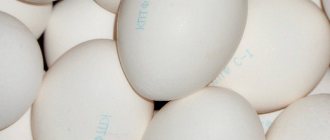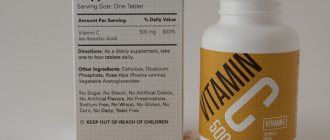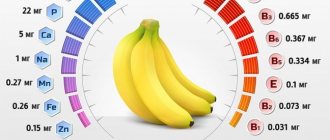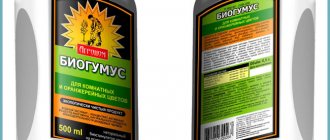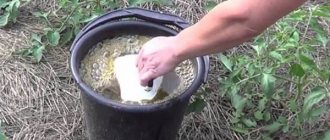Granules
The fertilizer, compressed into small granules, is very convenient to use - it does not require dilution or preparation. They are either scattered over the surface of the soil in a certain place, or buried to a shallow depth and watered. The release of nutrients occurs gradually, so granular fertilizers are classified as long-acting products.
The ratio of the main chemicals depends on the type of plant and their percentage is indicated on the packaging. Different packaging: 1; 2.5; 5; 10, 25 kg.
Fertika in granules:
| Name | Composition (NPK) in percent |
| Lawn (spring-summer) | 11-12-26 |
| Lawn (autumn) | 6-13-36 |
| Potato-5 | 11-9-16 |
| Autumn | 5-21-31 |
| Universal-2 | 12-8-14 |
| Coniferous | 8-5-14 |
| Floral | 17,7-9,4-11,2 |
Timing for applying Fertika Lux fertilizer
It is necessary to apply a solution of this fertilizer at certain times:
- from the first ten days of February to the end of April, seedlings of vegetable and flower crops are fed with Fertika Lux fertilizer;
- from the first ten days of May to the first ten days of July, fertilizing of all crops grown in greenhouse conditions and in vegetable beds or gardens is carried out;
- throughout the year - when growing indoor and balcony plants (from sowing seeds to growing seedlings and subsequent care of adult plants).
Interesting article:
The best fertilizers for indoor flowers
Important!
Since the substance is classified as hazard class 3, when working with it, you should protect your hands with latex gloves; diluting the fertilizer in containers intended for cooking is prohibited. After finishing work, wash your hands in warm water and soap.
Fertik fertilizer, from production to application - video
Water soluble
Preparations in the form of coarse powder quickly dissolve in water, are used for root (watering at the root) and foliar feeding (spraying), can be combined with pesticides, and added to tank mixtures. A distinctive feature is a special chelated form of nutrients. Chelates are close in structure to the structure in which the substances are in their natural state, so they are absorbed by plants several times better than mineral fertilizers.
Water-soluble fertika garden and vegetable garden:
| Name | Composition (NPK) in percent |
| For evergreens | 8-7-21 |
| Crystallon floral | 18-5-23 + 3 Mg |
| Universal crystal | 18-16-21 + 3Mg |
| Kristalon tomato | 8-11-37 + 5Mg |
| Crystalon cucumber | 14-11-32,5 |
| Lux | 16-20-27 |
| Plus | 16-20-27 |
Fertika Lux: reviews on the use of fertilizer for plants
Olga, 45 years old, Vologda region: Until 2011, I actively used Kemira to fertilize my vegetables. When they stopped producing this fertilizer, I was very upset, because this fertilizer completely suited me - after using it, my vegetables grew by leaps and bounds. But then my gardening neighbors told me that instead of my favorite fertilizer, Fertika is produced, which has the same positive qualities as Kemira. Now I use this fertilizer every year in my vegetable beds.
Natalya, 50 years old, Moscow region: I use fertilizer to fertilize my indoor plants, of which I have a lot. The positive effect of this fertilizer on my indoor flowers is especially noticeable - their petals have become more intensely colored, and the flowering period has increased. Now I can’t imagine growing flowers without Fertika Lux fertilizer. I recommend to all!
Despite the fact that “Kemira” was transformed into “Fertika”, this did not affect the quality of the fertilizer in any way - the new fertilizer is prepared from the same raw materials, according to European standards, and it also has a large number of positive qualities,
thanks to which it remains popular among Russian summer residents, Fertika is also used when growing vegetables and other cultivated plants on an industrial scale.
Recently searched:
Liquid
Fertilizers in liquid form are designed for feeding indoor flowers, some types of vegetables and berries. They are fast-acting, so they can be used more often than granular ones. Packaging – ampoules (10 and 30 ml), plastic bottles (250 and 500 ml).
Kinds:
| Name | Composition (NPK) in percent |
| Suite 1 (vegetables, seedlings) | 1,6-2,1-2,7 |
| Suite 1 (flowers) | 3,2-4,2-5,4 |
| Crystalon (citrus) | 3,4-2,9-4,7 |
| Crystalon (indoor flowers) | 3,2-4,2-5,4 |
| Crystalon (violets) | 3-3,2-5,6 |
| Crystalon (palm) | 3,5-3,2-4,2 |
| Crystalon (hydrangea, azaleas) | 5,5-4,5-11 |
| Crystal (orchids) | 1,7-1,9-2 |
| Crystalon (garden flowers) | 8,8-7,8-11 |
| Crystal (roses) | 8-7,8-11 |
Fertika: composition and application of fertilizer
Since the Fertika Lux fertilizer contains all the necessary elements for the active growth of cultivated plants, and the product itself is used sparingly when applied to the soil, summer residents from different Russian regions immediately drew attention to Fertika. According to their reviews, after applying diluted Fertika to vegetable or garden crops, plants quickly grow, and weak ones become stronger in a few days.
Fertika Lux contains:
- 20.6% phosphorus;
- 27.1% potassium;
- 16% nitrogen;
- 0.1% manganese;
- 0.02% boron;
- 0.1% iron;
- 0.01% copper;
- 0.002% molybdenum;
- 0.01% zinc.
Nitrogen
It is necessary for plants in order to activate the process of photosynthesis in the aboveground part, and it also helps to accelerate the growth of vegetative mass.
Thanks to phosphorus
, the root system actively develops and also absorbs nutrients from the soil faster.
Thanks to potassium,
plants form more buds and ovaries, fruits develop better, and their taste improves.
Since potassium is the main element in fertilizing, because the active flowering and productivity of cultivated plants depends on it, therefore, in the composition of all varieties of Fertika, the percentage of this element is the highest.
Important!
Fertika Lux contains no chlorine!
Fertilizer for seedlings:
Athlete
Fertika Lux is usually used for the following purposes:
- in greenhouses, fertilizers are applied to vegetable crops and flowers to increase productivity, as well as flowering of plants, while the growing season is reduced;
- Fertika is used to fertilize indoor flowers to speed up and increase their flowering, and it also makes the flowering period of indoor plants longer;
- This fertilizer is used to fertilize garden flowers during the formation of buds in order to improve the color intensity of their petals;
- after transplanting vegetable seedlings to a permanent place, they are also watered with Fertika to speed up the acclimatization of seedlings in a new place, as well as to increase the number of flowers and buds;
- this fertilizer is also used as a growth stimulator when growing seedlings of vegetable and flower crops.
Important!
Since Fertika is quite expensive, its solution is usually used as a foliar feeding - for spraying foliage and bushes.
Organomineral
The composition of organomineral preparations includes humic acids and highly effective mineral additives. In addition to their nutritional function, they improve the structure of the soil, make it looser, retain moisture, and prevent the leaching of nutrients from the soil.
Kinds:
| Name | Composition (NPK) in percent |
| Fertika garden and vegetable garden | 10-5-8 |
| Fertika garden and vegetable garden universal (roses) | 8-6-10 |
| Fertika universal (strawberry, wild strawberry) | 3-11-14 + humate 18% |
| Fertika universal (onion, garlic) | 5-5-13 |
Advantages and disadvantages
Gardeners note many positive properties of Fertika Lux fertilizer:
- Balanced composition of the drug and the absence of toxic elements.
- Possibility of use for open ground, for enriching soil in greenhouses and feeding house plants.
- Fast solubility.
- A pronounced effect from use: increased yield, improved taste and increased shelf life of fruits.
- Strengthening the immunity of garden crops.
- Achieving results quickly.
- Easy to use.
Users do not like the high price of products. But the demand for Fertika Lux fertilizer does not fall. The effect of use can be reduced only if the dosage and other recommendations set out in the instructions are violated. No other disadvantages have been identified in the mineral supplement.
Reviews
Galina Yurievna, Perm
I like that you can choose Fertika for both vegetables and flowers. Personally, I have been using it for a long time for tomatoes, roses, violets, and I use the universal one to water the flowers in the flowerbed and various indoor plants. The main thing is that the instructions indicate how to prepare it and how often to use it. I don’t combine it with other fertilizers. It seems to me that the composition is balanced and Fertika is enough.
Pavla, s. Olkhovka
For seedlings of vegetables and flowers I use Fertika Lux 1 and the same for feeding flowers, but only with a different composition (especially for flowers). The seedlings, if everything is taken into account, grow strong and take root well after picking. I only water it once every 10 days, and not every 7, as recommended. My soil is fertile, so I don’t overdo it. Garden flowers like spraying. The foliage becomes somehow saturated, they bloom for a long time. I spray either early in the morning or late in the evening.
Various fertilizers for violets
Fertika luxury
Previously, this fertilizer was produced under a different name - “Kemira Lux” . Today the name has changed, but the quality remains at the highest level.
The Fertika brand produces fertilizers for indoor and balcony plants, as well as garden crops.
In particular, there is Fertika Lux fertilizer to improve the growth of strawberries.
Composition, release form
Fertika Lux contains many vitamins and microelements . Including:
- iron;
- magnesium;
- zinc and other substances.
Fertika product for violets is produced in the form of fine crystals . You can find Fertik fertilizer on sale in packages of 20 or 100 grams.
A small package of the drug of 20 grams is equal to 1 level teaspoon and is suitable for one-time feeding of plants.
Features and Properties
Fertilizer for violets Fertika Lux is a complex mineral fertilizer. Does not contain chlorine, which minimizes harm.
Helps increase the number of buds, improve the color of already blooming flowers, and also promotes more frequent flowering of your favorite indoor and balcony crops.
Fertika luxury.
Advantages and disadvantages
The result becomes noticeable almost immediately after use. One day after the first watering, improvements in the quality of growth and development of violets become noticeable.
In addition, the form of release of the product itself is a clear advantage - storing the crystalline drug is much more convenient than its powder equivalent. The most important thing in this matter is to keep the packaging tightly closed.
CAREFULLY! The disadvantage of the drug can be considered the fact that the substance has a third hazard class and is considered moderately toxic, which means that keeping it open can cause significant harm to health.
Instructions for use and dosage
Before use, the drug must be diluted with water. To feed indoor flowering plants, in particular violets, only 20 grams of the nutrient is enough.
How to dilute Fertik Lux for violets:
- A sachet weighing 20 grams must be dissolved in 10 liters of water;
- Wait until the crystals are completely dissolved;
- Water the flowers.
Directions for use.
Methods of application
Apply in the same way as other fertilizers for indoor flowers. Alternate fertilizers with watering with plain purified water.
In the spring-summer period no more than 1-2 times a month, while in winter and autumn more frequent watering is necessary - at least once a week.
Reviews
Svetlana, Saratov. “I heard about Fertika Lux - they praised it.”
Nina, Kursk. “I don’t know if it helps, but I buy it every year.”
Maryana, St. Petersburg. “Good bags, I used them when I grew flowers”
Vitamin B12
With the help of this vitamin, you can easily stimulate violets that have stopped growing. In addition, you can feed your pets with vitamin cocktails based on vitamin B12.
Release form, where can I buy it?
Vitamin B12 is sold in several medical forms:
- capsules;
- pills;
- liquid solution.
You can purchase this type of fertilizer at a pharmacy or a special flower shop.
Features and Properties
The use of vitamin B12 for violets softens the soil, improves its nutritional properties, enriches both the roots of violets and the plants as a whole with microelements and other beneficial substances.
Advantages and disadvantages
The vitamin is easy to find on sale and very easy to use to fertilize flowers. Feeding violets with vitamin B12 cannot cause harm, since it contains 100% natural and beneficial substances.
Among the disadvantages, one can point out the difficulty of finding a liquid solution of B12 on sale without impurities. An exception is the chemical solution B12 for injection.
IMPORTANT! Gardeners need to be very careful with a pure injection solution, because such a solution, on the contrary, can easily harm violets.
Instructions for use
How to feed violets with vitamin B12:
- Prepare a solution in the proportion of 1 vitamin capsule per 250 milliliters of water;
- Water the violets with this solution alternating with watering with ordinary water.
If such a solution does not help, it is best to use a vitamin cocktail.
Methods of application
With the resulting solution , you can either water the plant under the roots or spray the violets from above with a spray bottle. In addition, you can use not one, but two, or even three B vitamins at the same time, thus forming entire vitamin cocktails and increasing the growth results of your green darlings.
Vitamin cocktails can be made from B vitamins.
Vitamin cocktails
To increase the nutritional value of the soil, you can use several vitamins at the same time , combining them into active vitamin cocktails. Here are some effective recipes.
The following mixture will help improve the growth of violet seedlings:
- Combine one capsule of B1 and B12 in a glass of warm water;
- To stir thoroughly;
- Water the seeds 1-2 drops, once every 7-10 days.
Advice! If the first recipe does not help, you can try preparing a stronger solution. Dissolve one capsule of B1, B6 and B12 in 1 liter of water. Spray the seedlings with this cocktail once every 10 days.
Reviews
Karina, Moscow. “I was advised to use vitamin B12 on the violet growers forum. I tried it and liked it. After just a month of use, I noticed that the leaves almost stopped withering and falling off.”
Alexandra, Kursk. “After fertilizing with vitamin B12, my violets began to bloom like crazy. I didn't expect such a result. Pleasantly surprised".
Epin (Epin-extra)
The active ingredient of the drug is epibrassinalite:
- helps the plant adapt to stressful situations;
- improves the quality of growth and development of pets.
Description
The drug is a growth stimulant, stress adaptogen.
Epin is a hormonal drug, which leads to an increase in productivity, and in the case of violets, an increase in the activity of their flowering.
Is an immunomodulator. Makes flowers resistant to various stresses and diseases.
Composition, release form
Epin is produced in capsule form by NestN. 90% consists of the active substance epibrassinalite.
Features and Properties
The use of Epin for violets helps plants develop immunity to various types of stress and diseases . Increases productivity, promotes flowering frequency, as well as an increase in the flowers themselves.
Advantages and disadvantages
Successful rooting and rapid seed germination are a clear advantage of the drug. Prevents such adverse factors as:
- overflow;
- drought;
- damage by pests and others.
Increases resistance to radionuclides and nitrates.
Epin-extra.
Instructions for use
Epin-extra for violets is used as follows:
- Dilute 1 milliliter of product in 5 liters of water;
- To stir thoroughly;
- Spray the plants by evenly wetting the leaves. The fact is that epin is not absorbed through the roots.
Methods of application
To prepare the solution, use only purified or boiled water. Alkaline water should not be used.
The finished solution must be stored for no more than 2 days in a dark place or no more than a day in the light.
Reviews
Flower growers often use Epin for violets; reviews of its use are overwhelmingly positive.
Alina, Moscow. “I use Epin as an aid in stress, to increase resistance to diseases (for example, frost, resuscitation).”
Egor, Ekaterinburg. “Zircon is good in stressful situations - transplantation, pests, improper care. The effect is clearly visible. But I didn’t see any changes at all from epin. It is probably softer for prevention. And I read that it is not absorbed by the roots, that is, it makes no sense to water it.”
Sugar
Often inexperienced gardeners are interested in the question of whether violets can be fed with sugar. It is possible and even necessary. This is a wonderful natural supplement if it is not possible to purchase professional care.
It is believed that if you feed plants with sugar in winter, this will compensate for the lack of ultraviolet radiation in flowers , and therefore improves plant photosynthesis.
Features and properties of glucose
Glucose is a source of energy, proteins, lipids and nucleic acids. This way the flowers develop and reproduce much more actively.
Feeding frequency
It is necessary to feed with sugar at the same frequency as with a classic biologically active fertilizer:
- in spring and summer - no more than 1-2 times a month;
- in the cold season - at least 1 time per week.
Advantages and disadvantages
One of the main advantages is that the ingredients for such a sweet top dressing can be found in every home.
Among the disadvantages is the fact that before using such complementary foods, it is necessary to thoroughly study the reaction of your flower to sugar or glucose. Otherwise, feeding indoor plants with sugar is an excellent option for caring for your green pets.
Violets respond well to feeding with sugar.
Instructions for use
To prepare such a sweet cocktail, just pour 1 teaspoon of sugar into a flower pot , then pour plenty of water.
There is also another feeding option. To prepare it, 1-2 tablets of pure glucose must be dissolved in 1 liter of water. Spray the violet leaves with the resulting mixture.
Reviews
Veronica, Moscow. “I feed my violets with sugar regularly. The result is obvious - they bloom profusely and often. I am delighted!"
Valentina, Yekaterinburg. “I’ve been feeding violets with sugar relatively recently. The first result was noticeable after the first feeding. The advice was useful, I liked it.”
Valeria, Saratov. “Sugar feeding actually helps a lot. Thanks for the advice. I’m very pleased.”
Some specialized fertilizers for individual crops
The compositions are selected to suit the individual requirements of different plants. For example, Crystalon for cucumbers has an increased potassium content. Fertilizer increases the yield of bushes and has a beneficial effect on the quality of fruits. Can be used for all pumpkins. Application period: spring and summer.
In the liquid fertilizer Kristalon for strawberries and strawberries, the proportion of nitrogen, phosphorus and potassium is small - 3: 2: 7. But there is zinc, magnesium, boron, sulfur, iron, manganese, molybdenum. Thanks to this set, berry crops bloom and bear fruit more abundantly and tolerate heat and frost better. Fertilizing prevents foliage chlorosis caused by iron and magnesium deficiency.
Potato fertilizer Fertika (Spring) is produced in the form of granules. They are introduced into the soil when preparing beds or during planting. You can also feed the bushes during hilling. The drug stimulates tuber formation and improves the keeping quality of the crop.
LEAF POWER fertilizer for grapes nourishes the vine at the start of the growing season. Ensures root development and abundant growth of above-ground mass. It is used throughout the growing season. Suitable for root and leaf feeding.
Types of fertilizing. The difference between them
The FERTIKA trademark unites the Kristalon, Fertika (including Fertika Lux), Leaf Power and Yaramila series. Among them are:
- granular compositions - they are scattered dry, mixed with soil, and then watered or dug up;
- liquid - concentrated Fertik fertilizers require dilution with water according to the instructions;
- water-soluble, in the form of crystals - suitable for drip irrigation systems;
- monodoses in ampoules - contents 1 pc. needs to be diluted in 1 or 5 liters of water, this is convenient for treating a small number of plants.
An ampoule can contain 10 or 30 ml of concentrate. The volume of liquid preparations is 0.25 l, 0.5 l, 1 l or 2 l. Dry fertilizers are sold in bags of 15-100 g, containers of 20, 100 and 800 g. There are more substantial packages - from 1 to 25 kg. For example, potato fertilizer is sold in this packaging. The Fertika line includes products for year-round and seasonal use (spring, summer, autumn separately).
By the way. The company also offers several popular fertilizers, especially in demand by summer residents. These are superphosphate, urea, azophosphate, calcium nitrate, etc.
